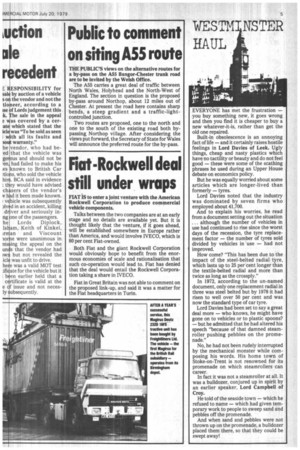WES TM NSTER HAUL
Page 7

If you've noticed an error in this article please click here to report it so we can fix it.
EVERYONE has met the frustration — you buy something new, it goes wrong and then you find it is cheaper to buy a new whatever-it-is, rather than get the old one repaired.
Built-in obsolescence is an annoying fact of life — and it certainly raises hostile feelings in Lord Davies of Leek. Ugly things, cheap and nasty plastics which have no tactility or beauty and do not feel good — these were some of the scathing phrases he used during an Upper House debate on economics policy.
But he was equally worried about some articles which are longer-lived than formerly — tyres.
Lord Davies noted that the industry was dominated by seven firms who employed about 41,700.
And to explain his worries, he read from a document setting out the situation although the number of vehicles in use had continued to rise since the worst days of the recession, the tyre replacement factor — the number of tyres sold divided by vehicles in use — had not improved.
How come? "This has been due to the impact of the steel-belted radial tyre, which lasts up to 25 per cent longer than the textile-belted radial and more than twice as long as the crossply."
In 1972, according to the un-named document, only one replacement radial in three was steel belted but by 1978 it had risen to well over 50 per cent and was now the standard type of car tyre.
Lord Davies had been set to say a great deal more — who knows, he might have gone on to vehicles or to plastic spoons? — but he admitted that he had altered his speech "because of that damned steamroller pushing pebbles on the promenade."
No, he had not been rudely interrupted by the mechanical monster while composing his words. His home town of Stoke-on-Trent is not renowned for its promenade on which steamrollers can career.
In fact it was not a steamroller at all. It was a bulldozer, conjured up in spirit by an earlier speaker, Lord Campbell of Croy.
He told of the seaside town — which he refused to name — which had given temporary work to people to sweep sand and pebbles off the promenade.
And when sand and pebbles were not thrown up on the promenade, a bulldozer placed them there, so that they could be swept away!




















































































































